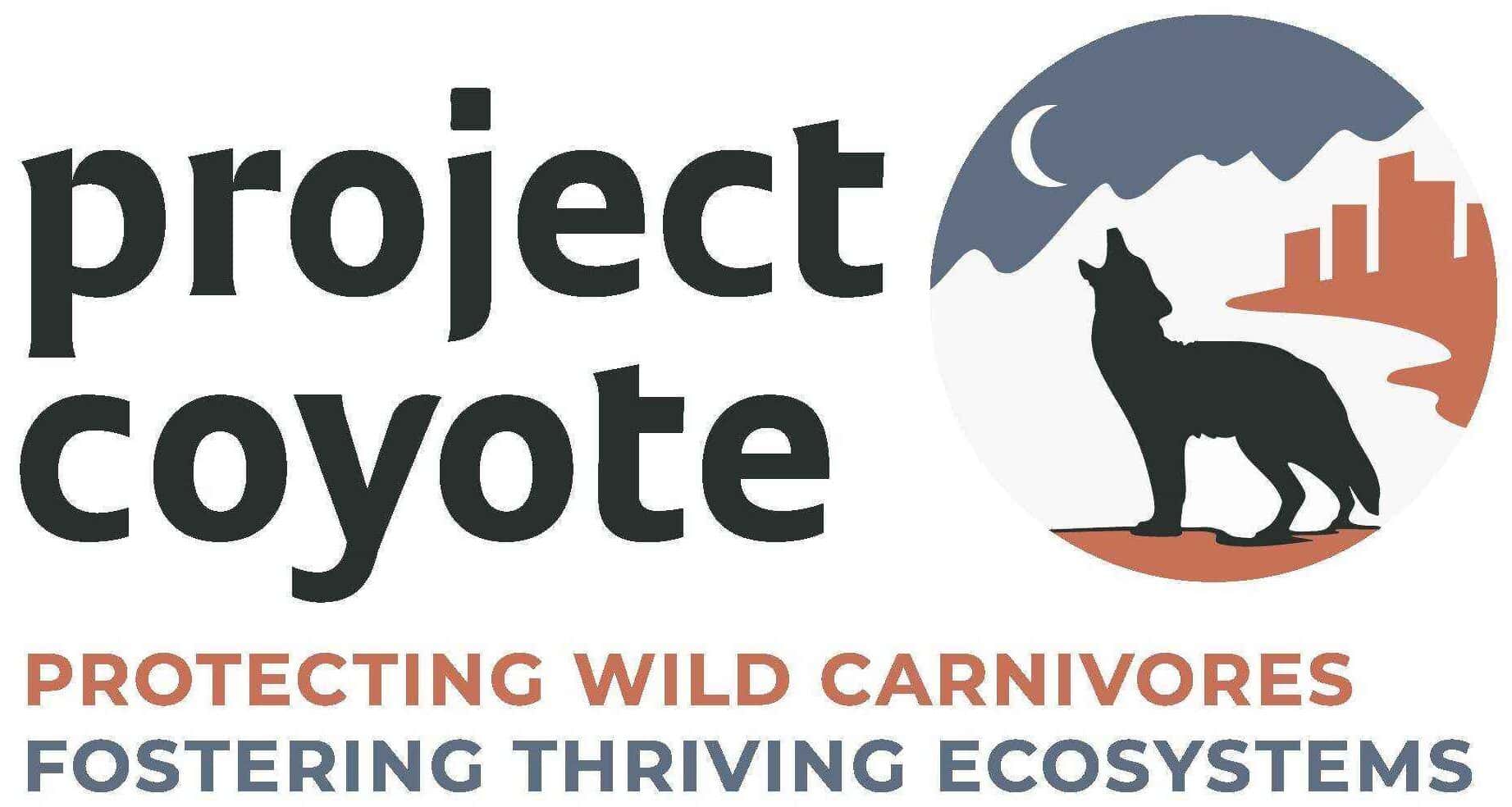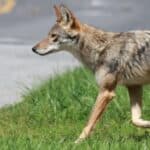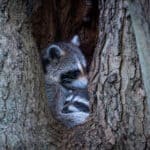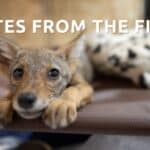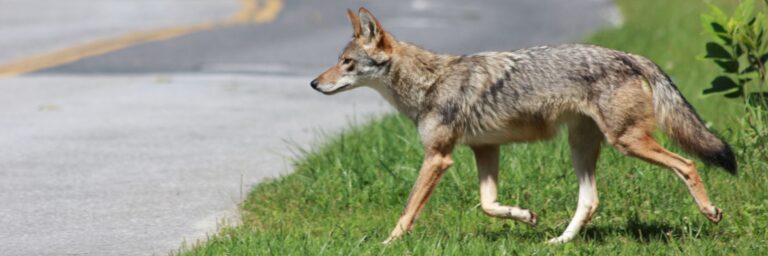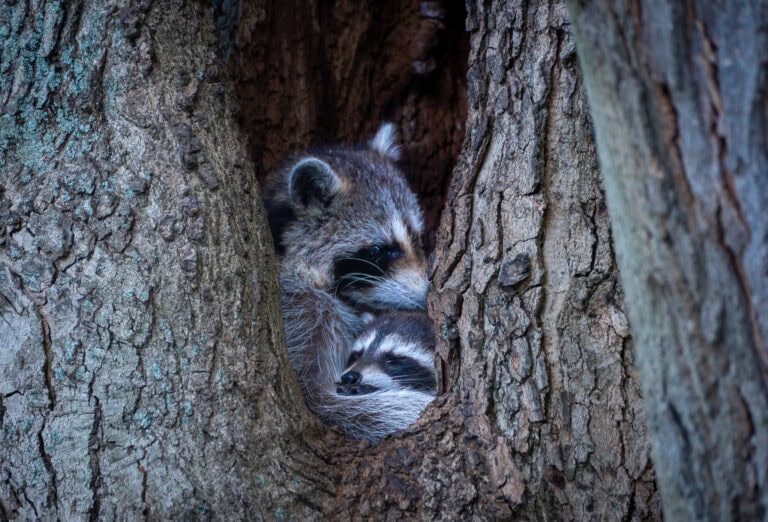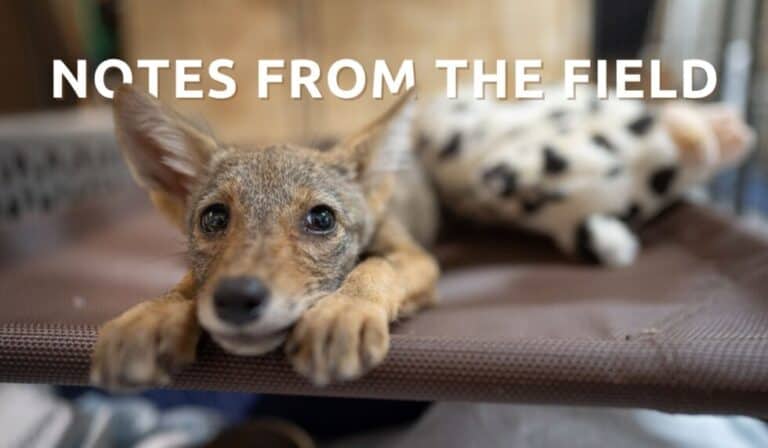Some of you may have attended Michelle Lute‘s outstanding and thought-provoking webinar, “(What’s So Funny ‘Bout) Peace, Love, and Coexisting,” in which she discussed critical issues such as what it means to live in harmony with wildlife and the role of psychology and ethics in informing the human-predator coexistence paradigm. If you missed it, you can listen to a replay and read the Q&A from the presentation here.
In this edition of our Notes from the Field blog, Michelle expands on her webinar presentation and shares additional thoughts around compassionate conservation and coexistence that are informed by her extensive study and experience in the field. She discusses some of the challenges involved in promoting awareness, understanding, and appreciation for animals that sometimes evoke fear and resentment in humans. As a counterpoint, Michelle explains that working through such challenges also confers opportunities for positive change as well as forward movement towards peaceful coexistence and a growing awareness of the critical importance of wild carnivores to the healthy functioning of our ecosystems—and ultimately to a sustainable, diverse and dynamic planet.
We are thrilled to have Michelle join our team as Project Coyote‘s National Carnivore Conservation Manager, bringing her talents, experience, and breadth of knowledge to our core programs and campaigns. I hope you enjoy Michelle’s blog below ~ and if you do, that you will share it far and wide with friends, family, and colleagues.
For the Wild,
Camilla
Q: As someone who has studied human-wildlife conflicts as part of your graduate school work and in your professional career, what do you think are some of the greatest impediments to fostering coexistence between people and wild carnivores?
A: I think the greatest barrier to promoting human-carnivore coexistence is our state and federal governments failing at democracy. If the institutions that make decisions about wildlife listened to the diversity of constituent voices, they would hear loudly and clearly that we want compassionate conservation that allows humans and carnivores to share wild and working landscapes. Of course, the fear of carnivores that some people still have is also an impediment to coexistence. But that fear–which is misplaced and rooted in myth and biases that exist in every human mind–can be addressed if we implement truly democratic, evidence-based processes to decide how humans treat wildlife. We have ancient methods with modern updates, like solar-powered fencing and range riders, to prevent conflict before it occurs. But instead of investing in those tools and teaching people how to use them, our governmental agencies tend to manage wild nature as if it were a cash crop that only exists for short-term human interests.
Q: What role do you see the social sciences contributing to address human-wildlife conflicts, and in particular, conflicts with predators?
A: Social sciences, from moral psychology to conservation ethics, provide essential tools to unpacking implicit value judgments that are driving our decisions and disagreements about wildlife. For example, a theory in social psychology called Social Identity Theory helps us understand the aspects of human nature that cause us to organize into groups that compete for limited resources. Those resources used to relate to basic needs like food and territory. Now we compete for power, access to power brokers, and control of whole landscapes and so-called natural “resources.” The group identities that we form have many positive aspects in our lives, such as social support networks, but can also result in our distrust of people from other groups, people that think, talk and dress differently. This means, for instance, that at a conference I’m less likely to sit down next to someone in camo and will assume I know his opinions and that he is a prototypical representative of the hunting community. I may miss out on learning that he and I share some values for wildlife. But if I remember what I’ve learned about Social Identity Theory, I can find ways to encourage different groups to come to the table, identify those shared values and work toward common goals of wildlife conservation. Social sciences help us understand ourselves and how we might find the better angels of our nature (as Lincoln stated so eloquently in concluding his call to unify a nation on the brink of civil war).
Q: As we look at the history of predator persecution in the United States and the ongoing emphasis on indiscriminate and lethal tools used by our federal and state wildlife management agencies, where do you foresee the opportunities for changing this paradigm?
A: I see great opportunities to revive our democratic processes to elevate all voices and interests in preserving healthy ecosystems and conserving wild nature. One way to enact change is top-down with reforms to state and federal agencies. A fundamental shift needs to occur in how our state wildlife agencies balance viewpoints of wildlife advocates (often referred to as non-consumptive users) with hunters (consumptive users). This shift requires debunking the myth that only hunters and anglers pay for conservation through excise taxes from gun and ammunition sales. Agencies must explicitly recognize the many ways non-consumptive users are already funding state wildlife agencies. This shift also requires changing the makeup of state wildlife commissions, who are the real power brokers in state wildlife decisions and rarely include diverse conservation voices. These changes will ensure that heterogeneous wildlife interests are represented and predator persecution is finally relegated to history.
Change also happens from the bottom-up. Project Coyote has led by example on these grassroots actions with several of our core programs. Our Coyote Friendly Communities and Ranching with Wildlife programs implement proven on-the-ground coexistence methods and techniques across urban and rural contexts. Our Keeping It Wild educational program is paving the way toward a compassionate future by teaching young minds about coexistence. Much of our work takes years and even decades to instill meaningful change, so educational programs pay dividends in influencing the hearts and minds of tomorrow’s decision-makers and engaged citizens.
Lastly, I’ll add that we have opportunities right now to end the most egregious forms of wildlife killing. States are increasingly recognizing that wildlife killing contests are no different than outlawed animal cruelty like dog- or cockfighting. The rogue USDA wildlife-killing program Wildlife Services is on notice for their irresponsible use of poisons, traps, and aerial gunning of predators. Our programs, as well as the modern best available science (some of which is coming from Project Coyote’s very own Science Advisory Board members), provide strong evidence that lethal tools can be replaced with non-lethal solutions that are more effective in reducing long-term costs and preventing conflict.
Q: How do you think individual caring citizens can engage in the issue of promoting coexistence and compassionate conservation?
A: First, never stop learning about the issues. New studies and other forms of knowledge, such as traditional ecological knowledge, are constantly evolving and adding to our understanding of the natural world. Learn from trusted organizations and sources, but also talk to people outside your regular circles to understand how they think about wildlife. Second, share that knowledge with your family, friends, colleagues, and anyone who will listen, especially your legislators and representatives. Third, don’t let fear or intimidation get in the way of speaking with an empowered voice to advocate for wildlife. Our democracy needs engaged citizenry to stay involved for the long haul in order to see progressive change.
Fourth, find anyway you can live more compassionately with animals. Sometimes I give talks about coexistence and people will come up to me afterward saying something like, “I’m all for coexistence. Others need to be willing to live with wolves… But mice in my attic, that’s where I draw the line and use poisons.” We all have blind spots, but we all have to be willing to live coexistence. So if you have unwanted animals in or near your home, find ecologically sustainable solutions. Exclude mice from your home by finding how they’re getting in. Encourage owls and other natural rodent-control predators by creating good habitat in your yard. You benefit with wildlife watching from your kitchen window and everyone benefits from a healthy ecosystem where predators are eating poison-free prey.
Q: A lot of people understandably feel deep despair when they learn about our mistreatment of wildlife, from killing contests to trapping, poisoning, and baiting, among other atrocities. What gives you hope and what would you say to young people who will be inheriting a planet in disrepair?
A: You’d have to be living under a rock or in total denial to avoid experiencing at least some level of despair and anxiety at the increasingly alarming news of the extinction and climate crises and injustices to all forms of life. One practice that sustains hope and motivation is to engage in the community and remember that there are many good people overcoming their own despair and taking action to make the world a better place. That action might come in the form of educating and empowering youth who are powerful advocates for their future when given a voice. As I mentioned earlier, Project Coyote’s Keeping It Wild program is such an awesome opportunity to bring knowledge about wildlife and coexistence to tomorrow’s policymakers, educators, and voters. Another way that people influence change—really one of the most powerful tools but often overlooked—is through art. Art engages, transcends cultures and languages, and motivates. That’s why Project Coyote also has our Artists for Wild Nature program—to connect artists and advocates in a common purpose of creating the change we want to see in the world.
So I tell folks, young and old, what my father said to ease my worries when he saw me getting overwhelmed: You are not alone in this fight. No one is going to save the whole world overnight. Help the vulnerable that you encounter in your daily path in the ways available to you. That could mean taking an injured bird to a certified wildlife rehabilitator, donating time, money, or skills to the cause, or calling your legislator about conservation policy impacting an imperiled species in your state. These are tangible actions available to all of us that together will lead to change.
